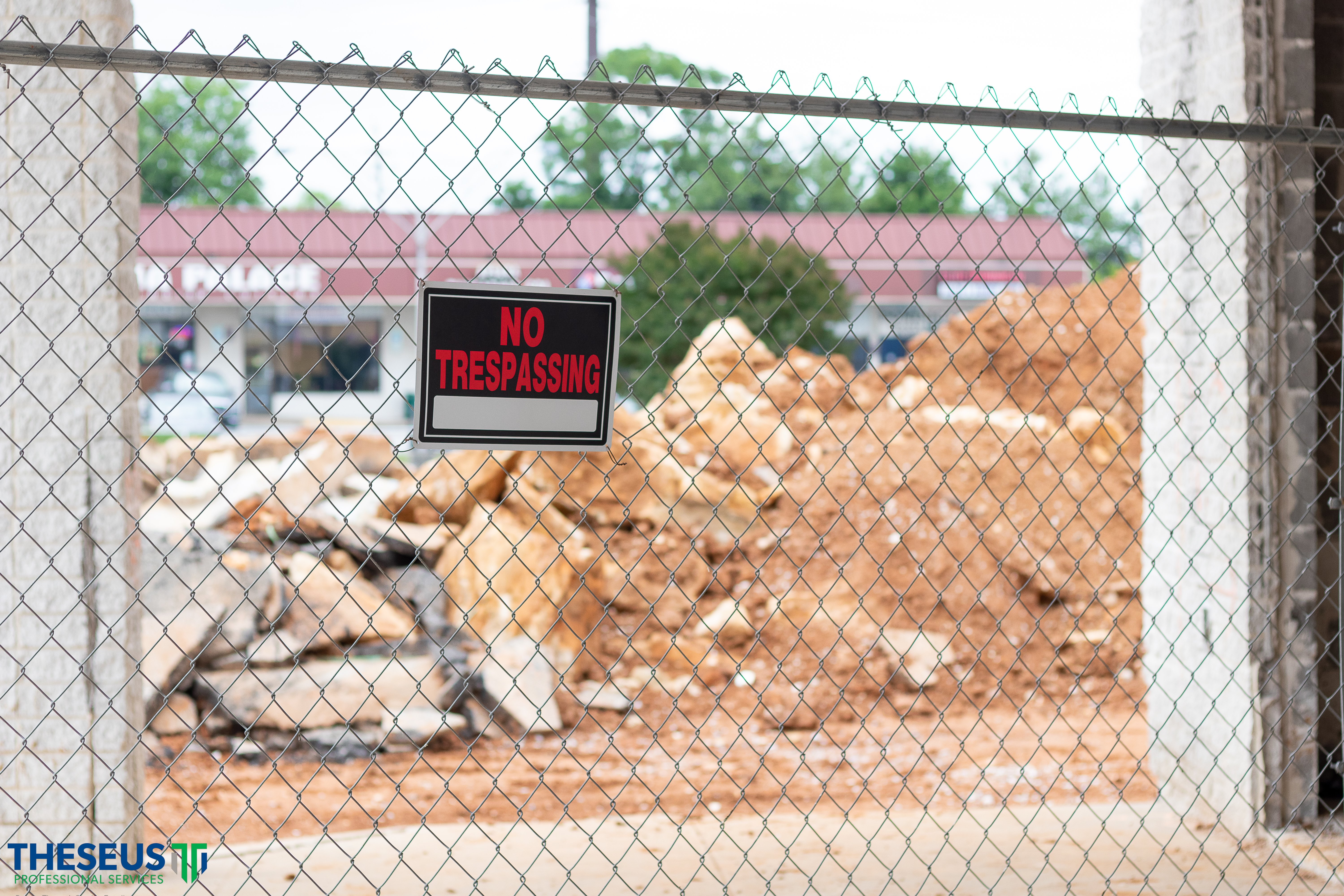4 min read
Perimeter Protection and Detection in Healthcare—Lessons for All Facility Security Managers
![]() Theseus Team
:
May 28, 2025 3:33:33 PM
Theseus Team
:
May 28, 2025 3:33:33 PM


In healthcare environments, maintaining a secure yet welcoming perimeter is a unique balancing act. Hospitals are open 24x7, serve a wide demographic, and must prioritize both safety and patient experience. Yet, the principles of perimeter detection and protection deployed in healthcare have broad applicability to other industries—from education and corporate campuses to government facilities and transportation hubs.
This article, based on a segment from the Healthcare Ring of Security educational series, is intended to help security managers think critically about perimeter design. While tailored to hospitals, the strategies discussed here apply to many facilities tasked with protecting people, property, and operations without compromising accessibility or service.
Defining the Perimeter Without Building Walls
Healthcare Perspective:
Hospitals must safeguard critical infrastructure like oxygen tanks, generators, and pharmaceutical stores without making the campus feel like a fortress. Physical barriers—such as brick walls, fencing, bollards, or even curbing—offer a first line of defense. These passive measures help control access, prevent accidental damage, and act as visual deterrents.
Cross-Industry Application:
Corporate campuses or schools may also need to isolate high-risk areas, such as playing fields or loading docks. However, the emphasis should remain on purpose-driven protection: use the right barrier for the specific risk—bollards for vehicle exclusion, fencing for pedestrian control, or reinforced enclosures for sensitive equipment.
Key Consideration: Always assess how maintenance access, emergency response, and customer experience might be affected before choosing permanent structures.
Intrusion Detection: Smart Security Without Obstruction
Healthcare Perspective:
Given the open nature of most hospital campuses, traditional perimeter intrusion detection at the property line is rarely feasible. Instead, healthcare facilities rely on layered detection closer to the building envelope: secure access points, motion sensors, intrusion alarms, and time-based lockouts.
Cross-Industry Application:
Retail stores, universities, and office buildings can benefit from these same layered principles. Close entry points at night, monitor secondary doors, and activate intelligent intrusion detection based on schedules or conditions. The goal is to limit risk exposure after hours without increasing the burden on staff.
Best Practice: Integrate your intrusion detection system with your Security Operations Center (SOC) for real-time response coordination.
Intelligent Video Surveillance: Cameras That Think, Not Just Watch
Healthcare Perspective:
Modern video analytics go beyond passive recording. AI-powered cameras can define virtual trip lines or restricted zones and issue alerts when someone crosses into an unauthorized area—especially useful in low-traffic zones after hours. However, to avoid alert fatigue, these tools must be deployed in controlled environments with proper calibration.
Cross-Industry Application:
From public transportation terminals to warehousing operations, intelligent surveillance can automate monitoring of sensitive zones. These systems free up personnel and can provide forensic value in investigations—when designed with intentionality and clear trigger conditions.
Emergency Call Boxes: Enhancing Perceived and Real Safety
Healthcare Perspective:
Call boxes placed throughout parking garages, walkways, and even stairwells provide a critical layer of emergency response. They not only enable direct communication with security teams but also foster a sense of safety for employees and visitors alike.
Cross-Industry Application:
Large campuses—academic, commercial, or industrial—should take the same approach. Any area where someone might feel isolated or vulnerable deserves an emergency call point. And just like in healthcare, the psychology of being seen and being heard plays a vital role in crime deterrence and rapid incident response.
Intercoms at After-Hours Entry Points: Security That Respects Visitors
Healthcare Perspective:
When certain doors are locked after hours, intercoms provide a seamless way for frequent visitors, patients, or staff to gain entry without frustration. This reinforces security while maintaining a positive visitor experience—an essential metric for hospitals.
Cross-Industry Application:
Any facility with fluctuating hours, rotating staff shifts, or public-facing services should adopt this model. Whether it’s a delivery driver after hours or a vendor during off-peak times, an intercom system bridges the gap between safety and service.
A Holistic View of Perimeter Strategy
Whether managing a hospital or a manufacturing facility, perimeter security must be both protective and inclusive. It’s not just about keeping threats out—it’s about preserving function, comfort, and continuity. Hospitals offer a unique case study because they must secure vulnerable populations in a non-restrictive environment. That same philosophy can guide any organization looking to improve safety without sacrificing openness.
Security managers: start by asking yourself these questions:
-
What are the most vulnerable parts of my perimeter?
-
How can we harden those areas without compromising operations?
-
Are we integrating detection technologies that reduce human workload while increasing awareness?
-
Have we planned for emergency communication and user-friendly access after hours?
This article is part of the Healthcare Ring of Security series presented by Eric Moreau of Theseus Professional Services. For a deeper dive into access control, perimeter security, and risk management for 24x7 facilities, watch the full free webinar. Even if you’re not in healthcare, the lessons shared can help elevate your facility’s security posture.
➡ Watch now and connect with Theseus for consulting across all critical infrastructure environments.
The "Healthcare Ring of Security" webinar is available on-demand, allowing you to watch at your convenience. Don’t miss this opportunity to learn from one of the industry's leading experts and take your healthcare facility’s security to the next level. To register and access the on-demand webinar, click here >>
 BONUS: DOWNLOAD OUR FREE IN-HOUSE SECURITY RISK ASSESSMENT CONSIDERATIONS GUIDE
BONUS: DOWNLOAD OUR FREE IN-HOUSE SECURITY RISK ASSESSMENT CONSIDERATIONS GUIDE
Security professionals are constantly looking for innovative ways to secure their facility and provide a safe environment within their budget. And, they are also constantly looking for resources to help them achieve that mission while expert advice is hard to come by.
Fortunately, we have released a considerations guide that will help security professionals perform their own in-house security risk assessment.
What's Inside?
This guide is intended to assist you with performing an in-house physical security risk assessment. In many cases, assistance from a third-party expert, like Theseus Professional Services, is required.
Identification of missing or inadequate physical security measures that safeguard assets (people, property, and information) and critical business functions is of paramount importance. The findings of a security risk assessment are used to measure and communicate the level of risk to the organization.
- Process Evaluation
- Threats
- Vulnerability Assessment Highlights
- Electronic Security Systems Considerations
- Site Considerations
- Building Entrances and Exits
- Common Functional Areas
- Building Envelope
- Utilities and Building Services
- Building Systems




